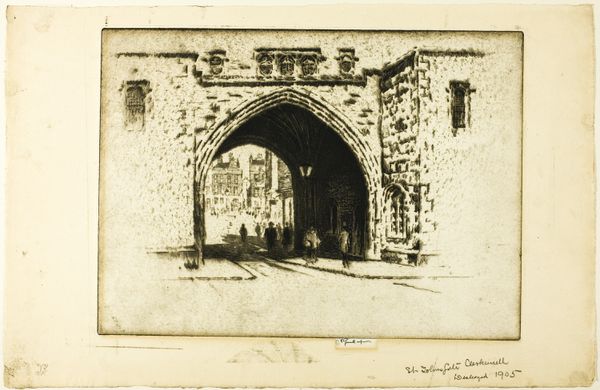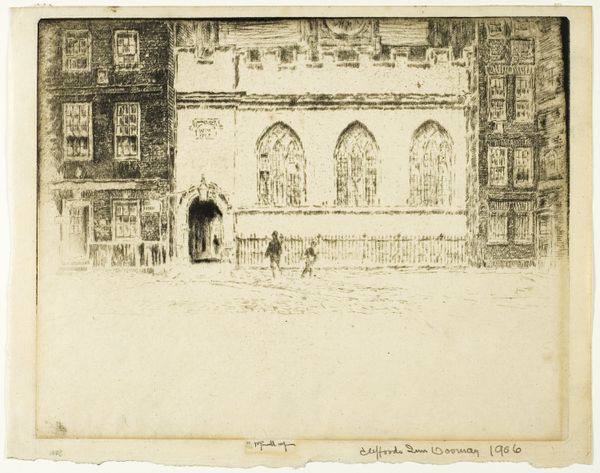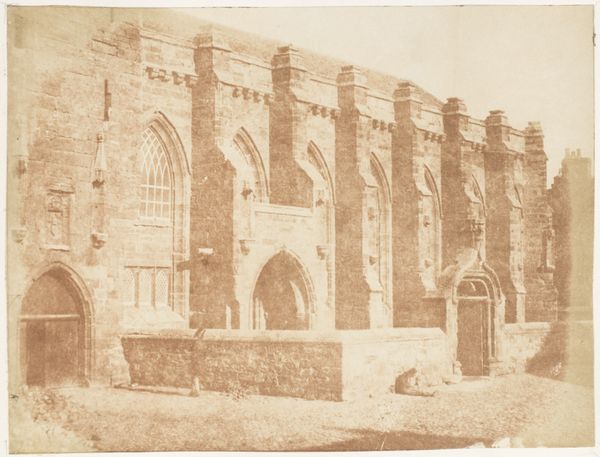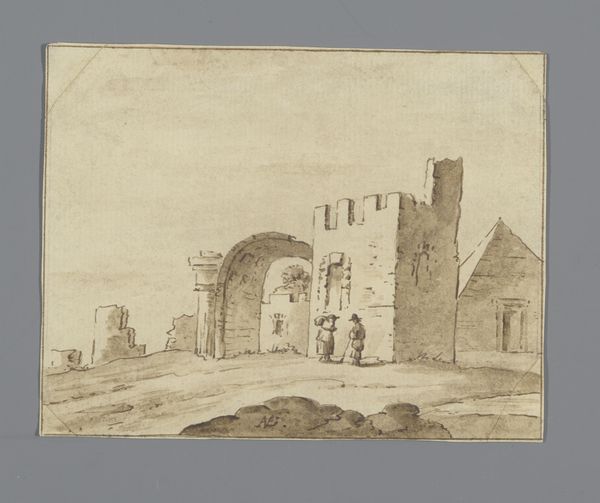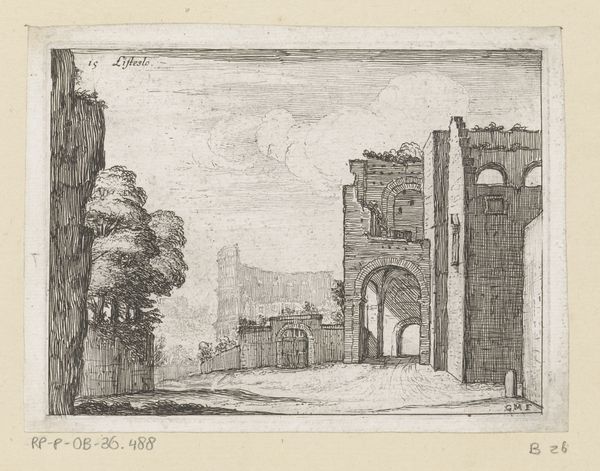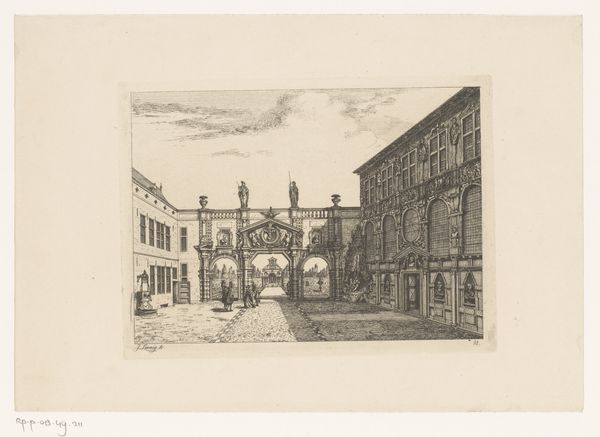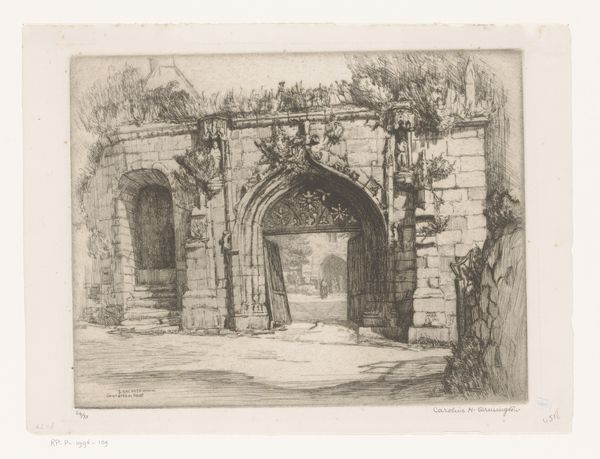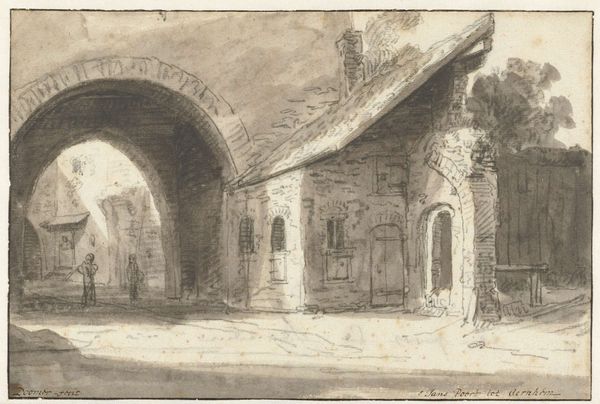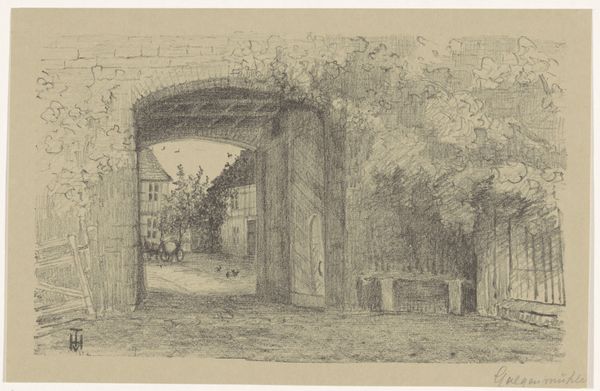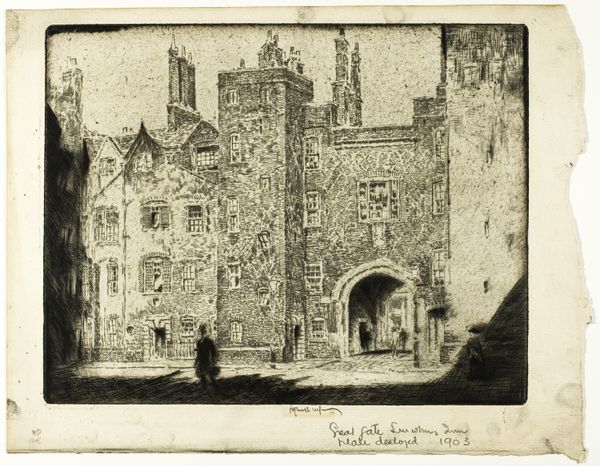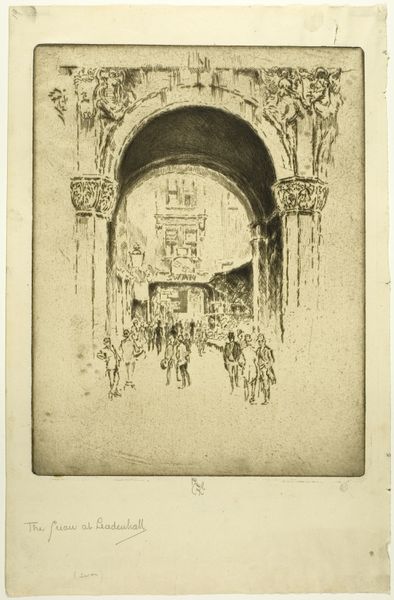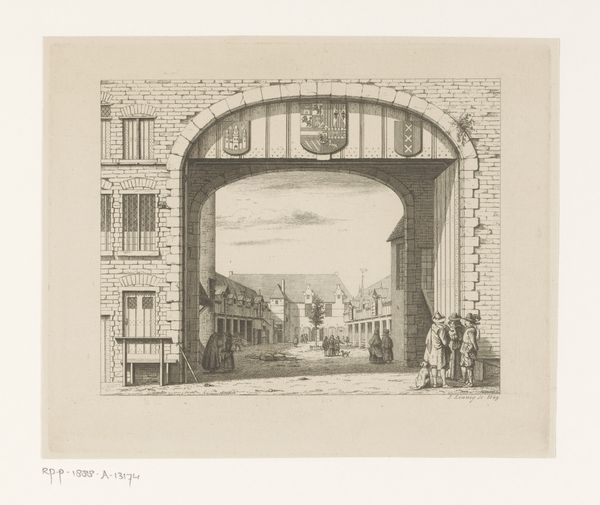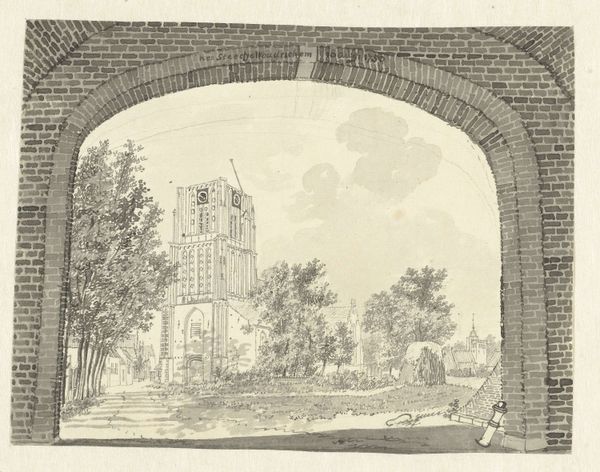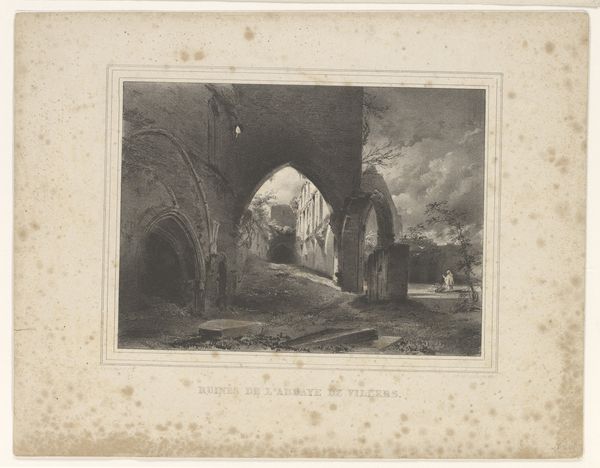
Dimensions: 205 × 282 mm (image); 241 × 352 mm (sheet)
Copyright: Public Domain
Curator: This is Joseph Pennell’s etching from 1903, entitled "St. John's Gate, Clerkenwell." It's part of the Art Institute of Chicago's collection. Editor: Immediately, I'm struck by its architectural grandeur. It feels like a portal to another era, despite being filled with modern-looking figures. The sharp lines and intense shadows contribute to an eerie atmosphere. Curator: Indeed, Pennell was very much part of the etching revival that was gaining momentum during this period. It shows his interest in portraying urban life and architecture using traditional printmaking techniques. The location, St. John's Gate, has a long history itself, once serving as the entrance to a priory of the Knights of Saint John. Editor: That adds another layer to it. I see it as a dialogue between past and present. The figures walking through the gate almost become swallowed by the structure itself, a symbol, maybe, of the weight of history pressing down. Or perhaps the institution controlling access, both literal and metaphorical. Curator: His work often emphasizes the impact of modernity on historic spaces, raising important questions about how these changes impact daily lives and culture. Note the crispness of the lines in the arch, almost photographic in its precision. But then, see how quickly they dissolve in rendering of the people? Editor: Exactly. It's a beautiful paradox. The technique and perspective emphasize a fixed, immovable structure, but that’s just a backdrop to a transient humanity flowing through. And notice that even the people passing through look upper class. It might hint at issues of social status and the exclusive nature of access to historical and cultural spaces. Who gets to walk through that gate, then and now? Curator: Pennell’s piece reveals both his technical mastery and a sensitivity to the changing urban landscape. And your reading reminds us that it also encourages an evaluation of social structure. He made an evocative statement of an institution’s presence in city life. Editor: Absolutely. These gates persist, but so do our questions about the institutions and societal inequalities they embody. This etching is a starting point, then, for much more than an aesthetic appraisal.
Comments
No comments
Be the first to comment and join the conversation on the ultimate creative platform.
